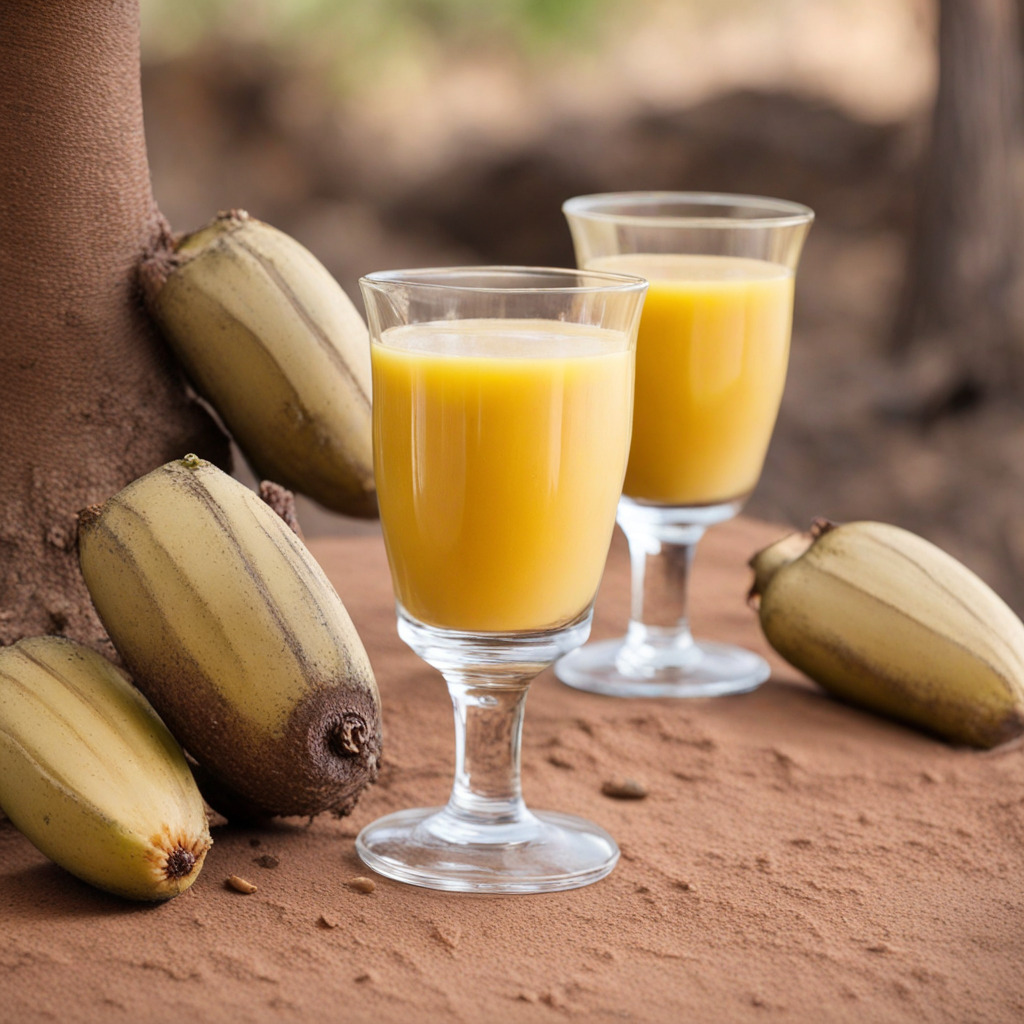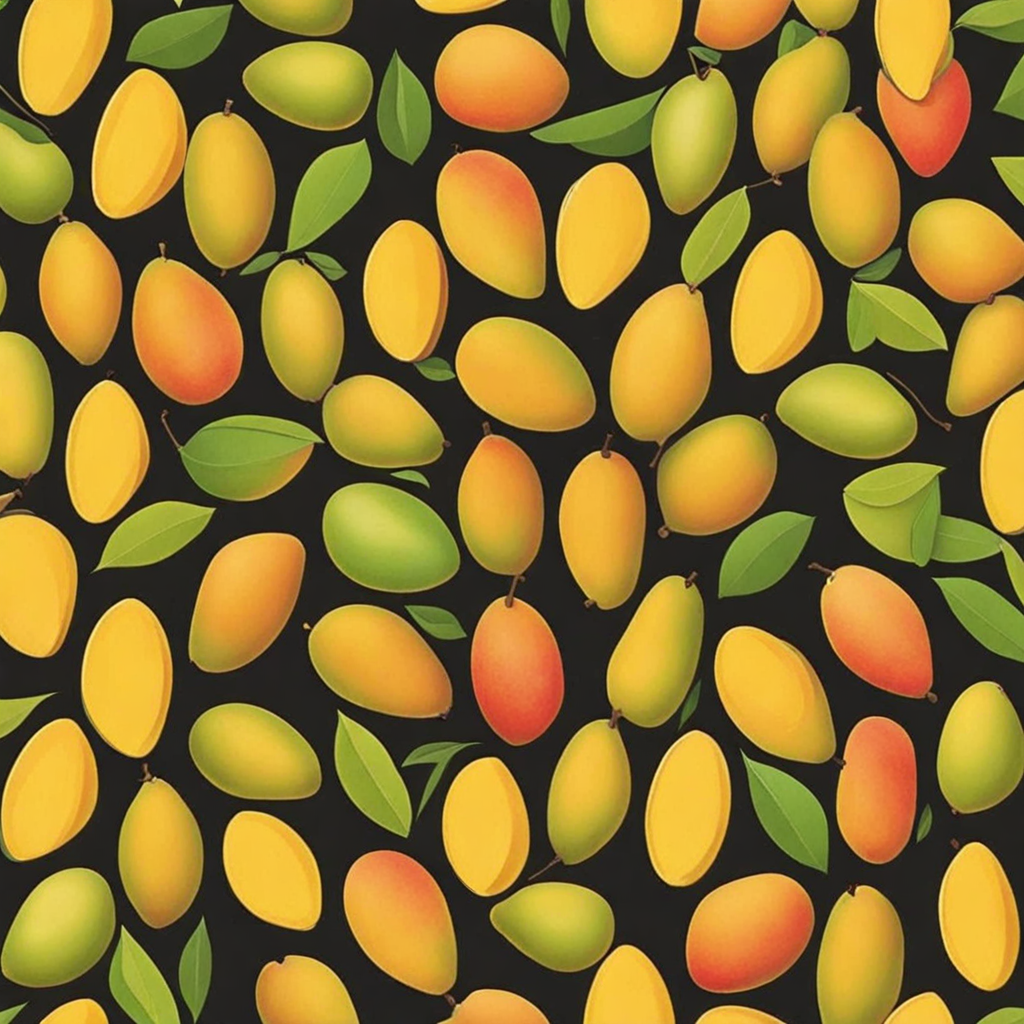Baobab Juice
Jus de Baobab is a refreshing beverage made from the fruit of the iconic baobab tree, known scientifically as Adansonia. This tree is often referred to as the "Tree of Life" due to its multitude of uses and the vital role it plays in the ecosystems and cultures of many African countries, including Mali. The baobab fruit has a rich history that dates back centuries; it has been consumed by various African communities not only for its delicious flavor but also for its nutritional benefits. Traditionally, the fruit was used to provide sustenance during dry seasons, while its pulp was incorporated into different recipes, showcasing the deep connection between the food and the land. The flavor profile of Jus de Baobab is unique and intriguing. The drink has a tart, citrus-like taste with hints of sweetness, reminiscent of a blend between grapefruit and tamarind. This distinctive flavor is mainly attributed to the high vitamin C content and the presence of various organic acids in the fruit. When prepared correctly, Jus de Baobab offers a refreshing burst of flavor that is both invigorating and satisfying, making it a popular choice for quenching thirst in the hot climate of Mali. The preparation of Jus de Baobab is relatively simple, yet it requires some know-how to extract the best flavor from the fruit. The process begins with harvesting the baobab fruit, which grows in hard, woody pods that can be collected once they fall from the tree. Inside the pods, the fruit is
How It Became This Dish
The History of Jus de Baobab in Mali #### Origins of Baobab and Jus de Baobab The baobab tree (Adansonia digitata), often referred to as the "Tree of Life," is native to the African continent and is particularly prevalent in the Sahel region, including Mali. Its iconic silhouette, with a thick trunk and sprawling branches, has earned it a revered status in African culture. The tree thrives in dry, arid climates and can live for thousands of years, serving as a vital resource for local communities. Jus de Baobab, or baobab juice, is derived from the fruit of the baobab tree, which is known for its unique appearance: a large, leathery pod filled with a powdery pulp and seeds. This pulp is rich in vitamin C, antioxidants, and dietary fiber, making it a highly nutritious food source. The preparation of Jus de Baobab involves harvesting the fruit, extracting the pulp, and mixing it with water and sometimes sweeteners to create a refreshing beverage. #### Cultural Significance In Mali, the baobab tree is deeply embedded in the cultural and social fabric of the community. It serves as a gathering place for storytelling, celebrations, and communal activities. The tree symbolizes life, resilience, and sustenance, as its various parts are utilized for multiple purposes, including food, medicine, and shelter. The juice made from baobab pulp is not just a nutritional powerhouse; it also holds cultural significance. It is often consumed during traditional ceremonies and family gatherings. The vibrant taste of Jus de Baobab, with its tangy and sweet notes, evokes nostalgia and connection to ancestral roots. In many Malian households, it is a staple drink, especially during the hot season, as it is hydrating and refreshing. #### Nutritional and Medicinal Aspects The nutritional benefits of Jus de Baobab have been recognized for centuries. The pulp contains high levels of vitamin C—up to six times more than oranges—which is essential for immune function. It is also rich in calcium and antioxidants, promoting overall health. Beyond its nutritional value, baobab has been used in traditional medicine to treat ailments ranging from fevers to digestive issues. The health benefits of Jus de Baobab have attracted attention beyond Malian borders, leading to increased interest in its incorporation into global health trends. As health-conscious consumers seek out functional foods, the baobab fruit has emerged as a superfood, further elevating its status. #### Development Over Time The history of Jus de Baobab in Mali is a testament to the dynamic interplay between tradition and modernity. Traditionally, the preparation of baobab juice was a communal activity, often involving women who would gather the fruit, extract the pulp, and prepare the drink for their families. This practice not only nourished the body but also fostered community bonds. In recent decades, as globalization and urbanization have transformed lifestyles, the way Jus de Baobab is consumed and marketed has evolved. The rise of the health food movement has led to an increased appreciation for local, traditional foods. This shift has allowed Jus de Baobab to gain recognition beyond the confines of Mali, with international markets showing growing interest. Malian entrepreneurs have begun to capitalize on this trend, producing packaged Jus de Baobab for export. This development has created new economic opportunities for local communities and has encouraged sustainable harvesting practices that protect the baobab tree. #### Culinary Uses and Variations While Jus de Baobab is often enjoyed as a refreshing drink, its culinary versatility extends to various dishes. In Mali, baobab pulp can be used as a thickener for soups and stews, adding a unique flavor and nutritional boost. It can also be incorporated into desserts, smoothies, and energy bars, appealing to a broader audience. In addition, innovative chefs and food artisans are experimenting with baobab in fusion cuisine, blending traditional Malian flavors with contemporary culinary techniques. This creative exploration not only honors the heritage of the ingredient but also introduces it to new palates. #### Sustainability and Future Perspectives As interest in Jus de Baobab grows, it is essential to approach its harvesting and commercialization sustainably. The baobab tree plays a critical role in its ecosystem, providing habitat for various species and preventing soil erosion. Responsible harvesting ensures that the tree continues to thrive, benefiting both the environment and local communities. Educational initiatives are emerging to raise awareness about the importance of the baobab tree and the nutritional benefits of Jus de Baobab. By promoting sustainable practices and encouraging the consumption of local foods, Malians can safeguard their cultural heritage while adapting to modern demands. #### Conclusion The history of Jus de Baobab in Mali is a rich tapestry woven with threads of tradition, community, and resilience. From its origins as a local beverage to its rising status as a global superfood, baobab juice embodies the spirit of Mali—vibrant, nutritious, and deeply connected to the land. As it continues to evolve, Jus de Baobab stands as a testament to the enduring significance of cultural foods and the potential for local ingredients to make a mark on the world stage. In celebrating Jus de Baobab, we honor not only the flavors and nourishment it provides but also the stories, traditions, and communities that continue to thrive around this remarkable tree. The baobab's legacy is one of life, health, and harmony with nature—a message that resonates across borders and generations.
You may like
Discover local flavors from Mali







